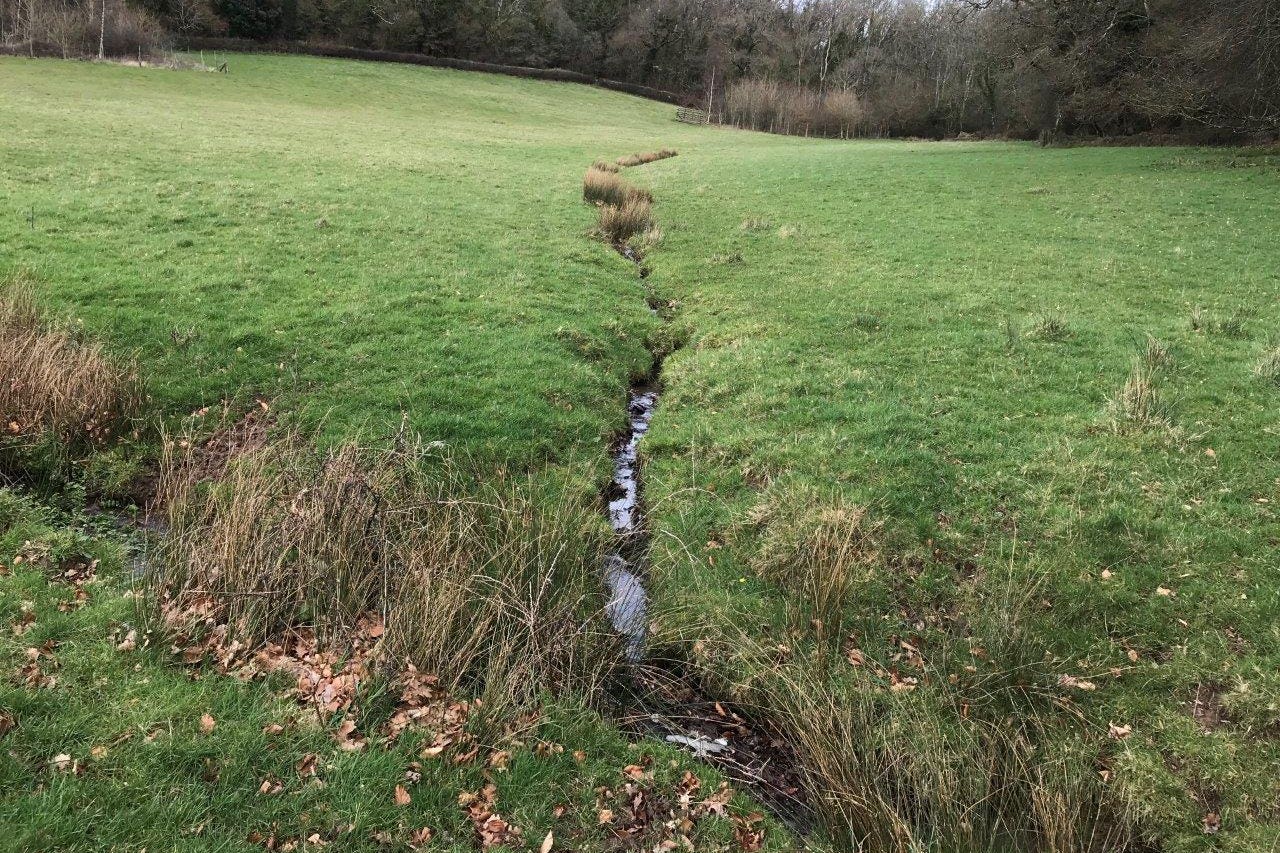Major project under way to reconnect Exmoor river to its original floodplain
The National Trust says the restoration project is a UK first.

Your support helps us to tell the story
From reproductive rights to climate change to Big Tech, The Independent is on the ground when the story is developing. Whether it's investigating the financials of Elon Musk's pro-Trump PAC or producing our latest documentary, 'The A Word', which shines a light on the American women fighting for reproductive rights, we know how important it is to parse out the facts from the messaging.
At such a critical moment in US history, we need reporters on the ground. Your donation allows us to keep sending journalists to speak to both sides of the story.
The Independent is trusted by Americans across the entire political spectrum. And unlike many other quality news outlets, we choose not to lock Americans out of our reporting and analysis with paywalls. We believe quality journalism should be available to everyone, paid for by those who can afford it.
Your support makes all the difference.A major restoration project is under way to reconnect a river to its original floodplain.
The National Trust, which is leading the work on the River Aller on its Holnicote Estate in Somerset, says it is a UK first and will create a healthier and more resilient area.
In 2019 a pilot took place on a tributary of the river and the approach – called Stage 0 – is now being scaled up to take in 15 hectares of the main river and its surrounding landscape.
Ben Eardley, project manager for the National Trust, said: “We now have a tried and tested method to start reversing the damage done to our rivers.
By creating these new wetlands, they will not only hold more water during floods or drought but also effectively store carbon
“‘Stage 0’ floodplain reconnection completely resets natural processes – it’s like the ‘ctrl, alt, delete’ equivalent of a computer reset – and lets the river decide what it wants to be.
“By seeing the river and its surrounding landscape as a whole, we can build resilience and boost biodiversity.”
The first stage of the project is under way, with earthworks creating shallowly skimmed areas to reset the valley bottom and natural river flow.
Large timbers have been pinned or partially buried into the floodplain in a bid to fast-track habitat restoration, as this helps slow flows and develop more diversity.
This creates the type of conditions that may have existed before the river system was heavily managed, the National Trust say.
Over the next few weeks, floodplain wildflower seeds such as ragged robin, devil’s-bit scabious and meadowsweet will be sown.
Next spring further work will take place to enrich the habitat, including the planting of about 25,000 native trees such as willow, bird cherry and black poplar.
“The river will no longer run along a single channel but form part of a complex waterscape with channels, pools, wetland and marshes,” Mr Eardley said.
“This helps slow the river flow to help combat flooding and drought events as well as well as increasing wildlife and tackling the impact of climate change by holding water in the landscape.
“By creating these new wetlands, they will not only hold more water during floods or drought but also effectively store carbon.
“So, the river catchment will be better able to cope with extreme weather events or changes in climate. And it also rejuvenates the surrounding landscape.”
These improvements to the riverside habitat will also support more wildlife including aquatic insects such as dragonflies, fish including brown trout, grass snakes, birds, bats, water voles and otters.
The Stage 0 project is part of the charity’s Riverlands project, which supports four river catchment schemes around England and Wales.
It is inspired by successful river projects in the United States, including Fivemile-Bell in Oregon, and is the first time such a technique has been tried in the UK.
The Oregon work found restoring river systems to Stage 0 led to natural processes and habitats being recovered.
In many cases, this leads to a slower flowing river system with multiple, smaller channels, pools, riffles and wetlands that support a much richer diversity of flora and fauna.
The US sites have also been resilient to the impact of fires in recent years, as well as providing wildlife with areas of refuge in recent wildfires.
We hope this project as a whole will significantly contribute towards achieving targets for nature recovery and climate change at a landscape scale, and provide vital evidence towards restoring natural processes in our river systems
Matt Pang, catchment coordinator at the Environment Agency, said: “The River Aller floodplain reconnection scheme allows us to test the new ‘Stage 0’ river restoration concept at a larger scale.
“It should achieve a range of outcomes for the environment including increasing habitat diversity and biodiversity, reducing flood risk for downstream communities, and making the river more resilient to the impacts of climate change.
“We hope this project as a whole will significantly contribute towards achieving targets for nature recovery and climate change at a landscape scale, and provide vital evidence towards restoring natural processes in our river systems.”
The National Trust is working on the project in partnership with the Interreg 2 Seas co-Adapt programme and the Environment Agency.
The project has been funded from the Interreg 2 Seas co-Adapt programme, Environment Agency, Somerset Rivers Authority (SRA), Green Recovery Challenge Fund and Frugi.